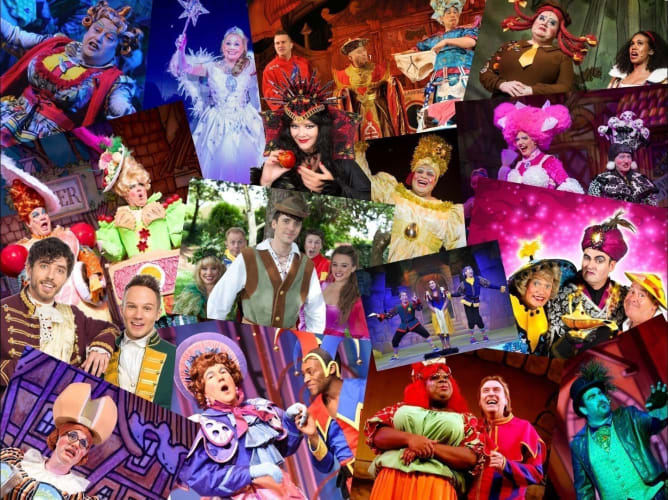Competition
To celebrate another year of the British Theatre Guide Panto News Blog, we've got three copies of Professor Jeffrey Richards's new book The Golden Age of Pantomime: Slapstick, Spectacle and Subversion in Victorian England to give away thanks to I B Taurus Publishers.
Professor Richards's book is the culmination of his research as part of the AHRC funded project 'A Cultural History of English Pantomime' which the British Theatre Guide followed over its three year research period. You can revisit our coverage of its conferences and events and read a round up of its findings below:
- Politics, Performance and Popular Culture in Nineteenth-Century Britain
- There is Nothing like a Dame
- A Cultural History of English Pantomime, ca. 1820 - 1910
All you need to do to be in with a chance of winning The Golden Age of Pantomime is answer the following question:
Where is top UK Dame Christopher Biggins appearing in panto this year?
E-mail your answers to [email protected] by Friday 13 March to be in with a chance of winning. Winners will be selected at random and announced in March's Panto News Blog.
The Golden Age of Pantomime: Slapstick, Spectacle and Subversion in Victorian England
Of all the theatrical genres most prized by the Victorians, pantomime is the only one to have survived continuously into the twenty-first century. It remains as true today as it was in the 1830s, that a visit to the pantomime constitutes the first theatrical experience of most children and now, as then, a successful pantomime season is the key to the financial health of most theatres.
Everyone went to the pantomime, from Queen Victoria and the royal family to the humblest of her subjects. It appealed equally to West End and East End, to London and the provinces, to both sexes and all ages. Many Victorian luminaries were devotees of the pantomime, notably among them John Ruskin, Charles Dickens, Lewis Carroll and W E Gladstone.
In this vivid and evocative account of the Victorian pantomime, Jeffrey Richards examines the potent combination of slapstick, spectacle and subversion that ensured the enduring popularity of the form. The secret of its success, he argues, was its continual evolution.
It acted as an accurate cultural barometer of its times, directly reflecting current attitudes, beliefs and preoccupations, and it kept up a flow of instantly recognisable topical allusions to political rows, fashion fads, technological triumphs, wars and revolutions, and society scandals.
Richards assesses throughout the contribution of writers, producers, designers and stars to the success of the pantomime in its golden age.

